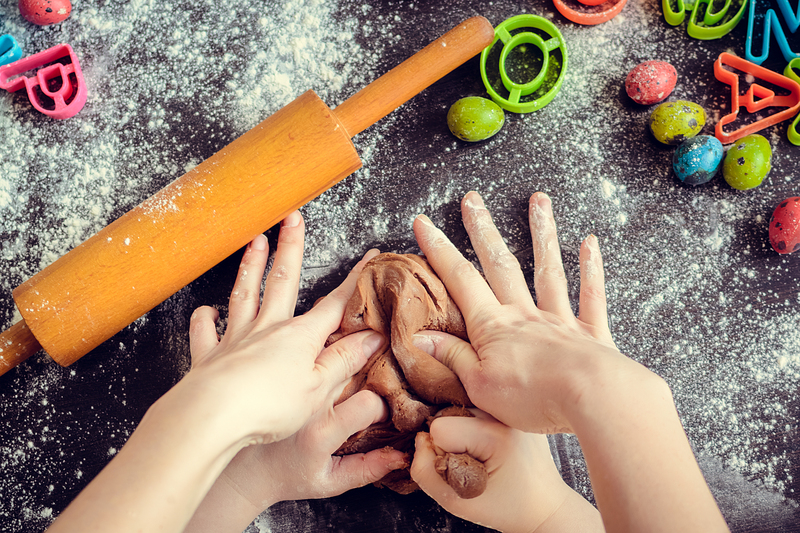Keeping Your Stovetop Pristine: Cleaning Burnt-On Residue
Posted on 21/09/2025
Keeping Your Stovetop Pristine: Cleaning Burnt-On Residue
Are you tired of stubborn, burnt-on grime clinging to your stovetop? A spotless stovetop doesn't just make your kitchen shine--it also enhances food safety and prolongs your appliance's life. Discover expert, effective stovetop cleaning methods for tackling even the toughest burnt-on residue, and learn how to keep your cooking surface looking pristine every day.
Understanding Burnt-On Stovetop Residue
Burnt-on residue on your range is more than just unsightly--it can also harbor bacteria, cause unpleasant odors, and even affect the taste of the meals you prepare. Grease splatters, spills, and food debris can quickly become tough, baked-on stains if not addressed promptly.
There are several different stovetop types, each requiring their own cleaning approach:
- Gas stovetops--feature removable grates and burners.
- Electric coil stovetops--have exposed heating elements and drip pans.
- Glass or ceramic cooktops--require gentle care to prevent scratches.

Why Keeping Your Stovetop Spotless Matters
Maintaining a clean stovetop is about more than aesthetic appeal. Let's explore why addressing burnt-on residue is essential:
- Food Safety: Old spills can foster bacteria and cross-contamination.
- Performance: Caked-on grime can reduce heat distribution and efficiency.
- Durability: Neglect can cause permanent staining or even damage the surface.
- Odor Prevention: Carbonized residue may release unpleasant smells when you cook.
- Keeps Your Kitchen Inviting: A shiny stove enhances the heart of your home.
Essential Supplies for Cleaning Burnt-On Stovetop Residue
Before tackling tough stovetop stains, gather the right supplies for safe and efficient cleaning:
- Baking soda--a gentle yet robust abrasive for tackling stains.
- White vinegar--helps dissolve mineral deposits and cut through grease.
- Lemon juice--natural degreaser and odor eliminator.
- Dish soap--breaks down oils and food particles.
- Non-scratch sponges or microfiber cloths
- Plastic or silicone spatula (for scraping)
- Razor blade or scraper (for glass & ceramic, used gently)
- Stovetop-specific cleaner (if needed for severe stains)
- Gloves--to protect your hands.
- Warm water
Step-by-Step Guide: How to Clean Burnt-On Residue from Your Stovetop
1. Preparing Your Stovetop
- Ensure the stove is off and completely cool before beginning.
- Remove grates, burner caps, or electric coils (if applicable) and clean them separately using warm, soapy water.
- Wipe away loose crumbs and surface debris with a dry microfiber cloth.
2. Loosen Burnt-On Residue
- Lay a hot, damp towel over the affected area for 10-15 minutes. This will help soften stubborn, baked-on grime.
- For especially tough spots, mix a paste of baking soda and water, then spread it directly over the burnt residue.
- Allow the paste to sit for at least 30 minutes (longer for severe stains).
3. Scrub Away the Stains
- Use a non-scratch sponge or soft-bristled brush to gently scrub the softened residue.
- For electric coil stovetops, avoid submerging coils--wipe with a damp cloth instead.
- Food that's still stubborn can be carefully scraped away with a plastic spatula. For glass-cooktop cleaning, use a razor blade or scraper at a 45-degree angle, always working gently to avoid scratching.
4. Tackle Grease and Stubborn Marks
- Spray white vinegar or lemon juice over the stovetop and let it fizz to cut through lingering grease.
- Wipe clean with a microfiber cloth.
- Repeat as needed until all residue is gone.
5. Final Rinse and Buff
- Use a clean, damp cloth to wipe away any remaining cleaning solution or paste.
- Dry and buff the surface with a fresh cloth for a streak-free, pristine shine.
6. Clean Stove Components
- Soak grates, burner caps, and knobs in warm, soapy water.
- Scrub gently, rinse, and let them air dry completely before reassembling.
Cleaning Burnt-On Residue: Methods for Every Stovetop Type
A. Gas Stovetops
Challenge: Grease and food can get lodged under burner grates.
Solution:
- Remove grates and caps, soak them in hot, soapy water with a splash of vinegar.
- Scrub with a brush, rinse and dry completely.
- Wipe surface with a baking soda paste, then polish with vinegar for shine.
- Don't forget to clean around igniters with a dry toothbrush.
B. Electric Coil Stovetops
Challenge: Drip pans accumulate burnt-on grease.
Solution:
- Remove coils and drip pans (ensure everything is unplugged and cool).
- Soak pans in a mix of baking soda, dish soap, and hot water.
- For stubborn stains, scrub with a non-abrasive pad.
- Wipe clean and reassemble only after every part is fully dry.
C. Glass and Ceramic Stovetops
Challenge: Scratches and etching from abrasive cleaners.
Solution:
- Use only non-scratch pads and specialized glass cooktop scrapers.
- Apply a baking soda paste and lay a hot, damp towel over tough spots.
- Gently scrape residue with a razor blade held at a low angle.
- Buff with vinegar for extra brilliance.
Naturally Effective: Homemade Solutions for Stovetop Cleaning
DIY stovetop cleaners can be both affordable and environmentally friendly:
- Baking Soda + Water Paste: Lifts grime without scratching.
- White Vinegar Spray: Cuts through grease and neutralizes odors.
- Lemon Juice: Degreases, disinfects, and adds a fresh scent.
- Hydrogen Peroxide + Baking Soda: Tackles stubborn, burnt-on stains (test on small area first).
Avoid harsh, commercial oven cleaners on glass and ceramic surfaces unless the product is specifically labeled as safe for your stovetop type.
Preventing Burnt-On Buildup: Proactive Care Tips
Consistency is key to keeping your stovetop gleaming and minimizing the effort needed to remove burnt-on residue in the future. Here's how to safeguard your appliance:
- Wipe spills as soon as they happen--a quick swipe after cooking is easier than scrubbing later.
- Use lids or splatter guards to limit mess when frying or boiling.
- Deep clean weekly to prevent stubborn buildup, especially for frequent cooks.
- Check for cracks or damaged components, especially on ceramic or glass stoves, which can trap grime and make cleaning difficult.
- Use cookware suited to your stove type to minimize hot spots and burnt spills.
Common Mistakes to Avoid When Cleaning a Stovetop
- Never use steel wool or abrasive pads on glass or ceramic cooktops; they cause scratches that collect residue and dull the finish.
- Don't use excess water on gas or electric coil stoves; moisture can damage electrical components.
- Avoid harsh chemicals unless approved for your appliance; they can corrode metal parts or damage smooth surfaces.
- Never reassemble while wet. Always allow all parts to dry thoroughly.
Quick Troubleshooting: Dealing With Persistent Stains
- For old, blackened spots, repeat the baking soda/vinegar process and let the paste sit overnight.
- On glass/ceramic tops, try a commercial cream cooktop cleaner and a razor scraper for extreme cases.
- For rust on metal components, use a paste of baking soda and lemon juice; scrub softly until the rust lifts.
- If burnt odors linger after cleaning, simmer lemon peels or vanilla extract in a pan of water on the stove.
When to Call a Professional
Not every situation can be fixed with DIY cleaning. If you encounter:
- Unremovable, hardened residue that resists all at-home methods.
- Damage to burners or gas igniters caused by improper cleaning.
- Issues with stove performance after cleaning (e.g., uneven heating, strange smells when in use).

Frequently Asked Questions About Cleaning Burnt-On Residue
- How often should I deep clean my stovetop?
Weekly for frequent cooks, monthly if you rarely use your stove. - Can I use baking soda and vinegar on every stovetop?
Yes for most types, but always patch test and avoid excessive moisture on electric/gas models. - What if my burnt stains just won't come off?
Try repeating the baking soda and vinegar soak, or consider a stovetop-specific cream cleanser. - Is it safe to use a razor blade on my glass stovetop?
Yes, but use a clean, new blade, work at a very low angle, and never apply excessive force.
Conclusion: Enjoy a Gleaming, Burn-Free Stovetop Every Day
Cleaning burnt-on residue from your stovetop doesn't have to be a dreaded chore. With the right supplies, a little patience, and the proactive steps outlined above, you'll keep your stove looking and performing its absolute best. Whether your kitchen features gas burners, electric coils, or a modern glass cooktop, regular stovetop degreasing and residue removal will protect your investment and make every cooking session a pleasure.
Take a few minutes today to give your stove the attention it deserves--and enjoy the transformation of your kitchen's centerpiece into a truly pristine, inviting space.
Ready to make burnt-on residue a thing of the past? Follow these expert tips for a sparkling clean stovetop--every time you cook!
```



